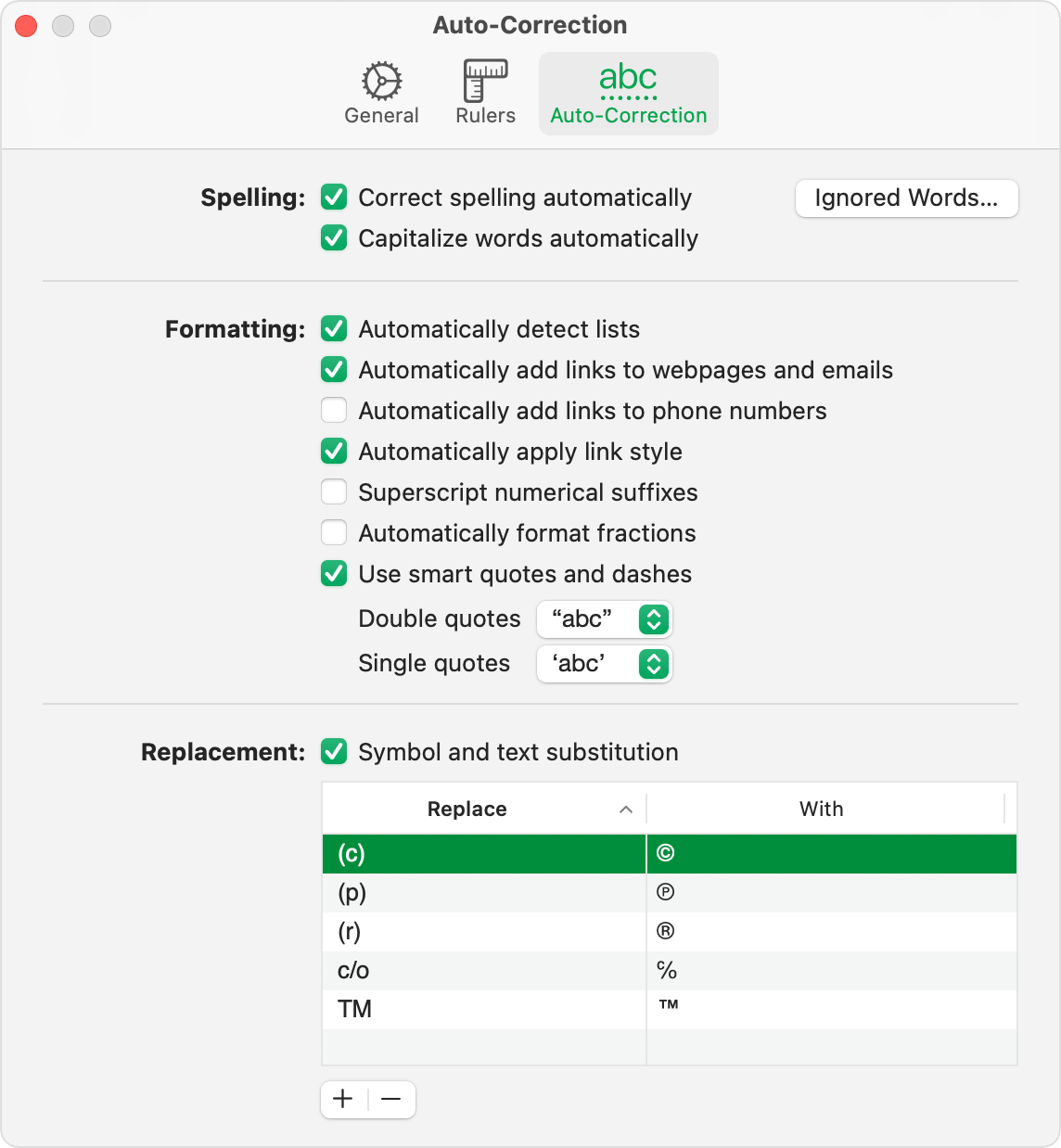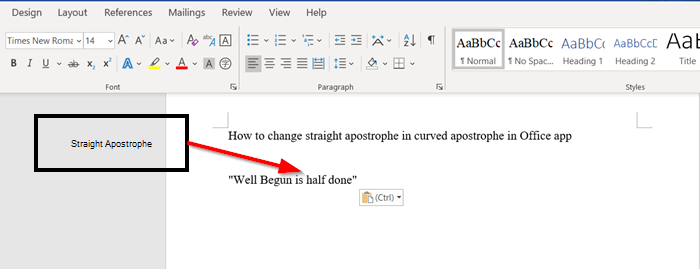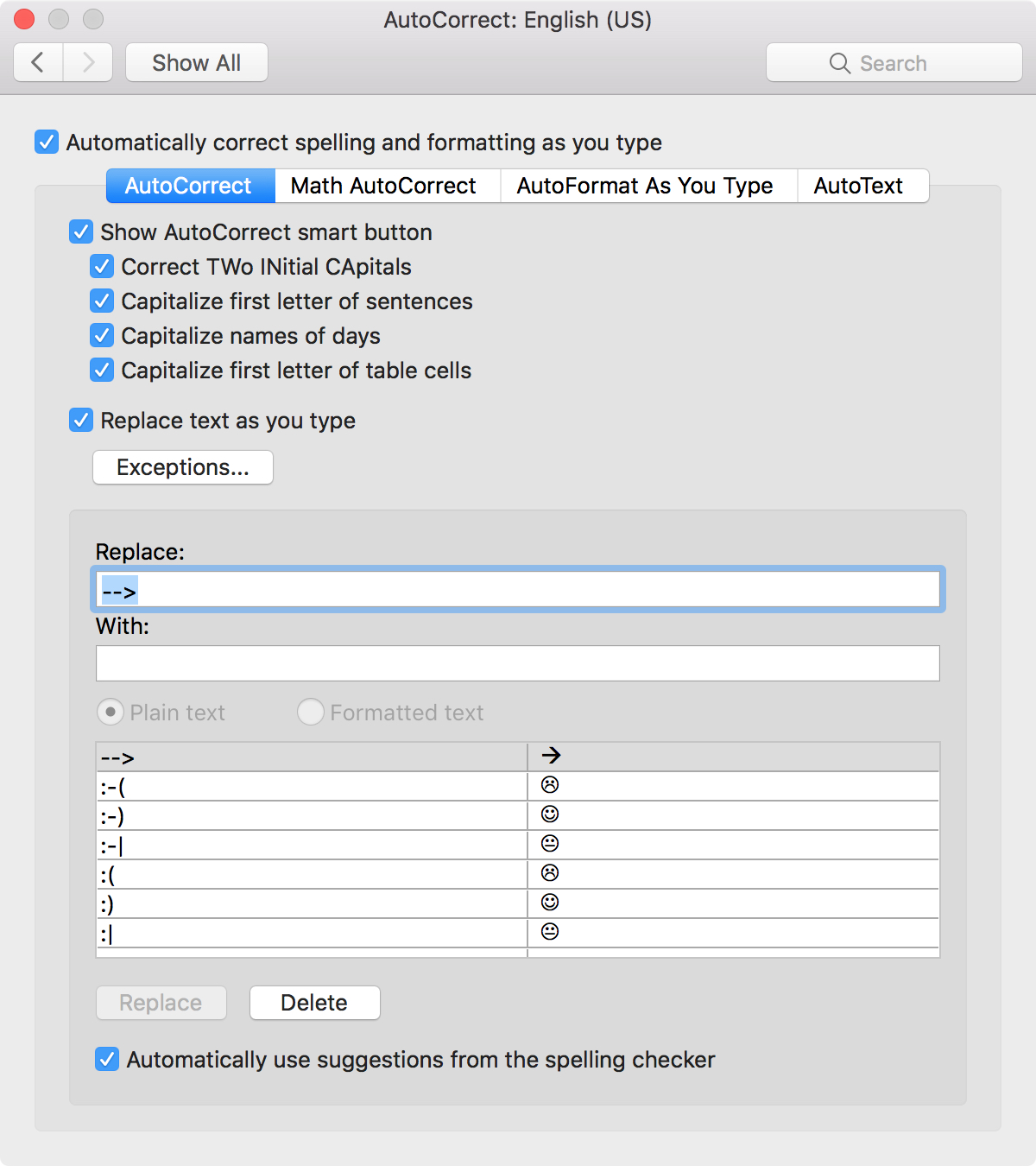

(Left and right quotation marks are also known as opening and closing quotation marks.) Straight Quotes With these curly marks (as we’ll see) it’s important to remember that an apostrophe is not the same character as a left single quotation mark. When they are used, they are normally reserved for quotations within quotations, “as ‘shown’ here.”† (Quotation marks, double or single, always come in pairs.) In Chicago and other styles that use double quotation marks, single quotation marks are rare. When this same character is being used as a right single quotation mark, it’s paired with its twin, the left single quotation mark. The apostrophe’s other main role is to form possessives (as it does at the beginning of this sentence). In other words, a curly apostrophe and a right single curly quotation mark are the same thing.Īs you’ve seen throughout this post, apostrophes help to form contractions.
#Word for mac remove curly quotes code
The official Unicode name for the curly type of apostrophe is “right single quotation mark.” As the relevant code chart explains, “this is the preferred character to use for apostrophe.”* In a moment we’ll see why smart apostrophes aren’t always very smart. Straight apostrophes, on the other hand, are what you normally get when smart quotes aren’t enabled. Smart apostrophes are the marks you’ll see in this paragraph and throughout this post. In word processors you will probably get them by default, thanks to a feature called smart quotes. Smart apostrophes, also known as curly or typographer’s apostrophes, are the professional-looking marks preferred by most publishers. To use them correctly, it helps to know how they work.

So fix the quotes first, then the apostrophes.There are two different kinds of apostrophes: smart and straight. One caveat: if you’ve corrected any apostrophes that appear at the start of a word ( Patent ’211, ’70s rock), this tip will goof them up again. When you paste or import text with straight quotes in it -for instance, a deposition transcript or email- your word processor may not always convert the straight quotes properly. So why do I keep seeing straight quotes in legal documents? That’s why straight quotes are one of the most grievous and inept typographic errors. Smart-quote substitution has been built into word processors for 20 years. WordPerfect Tools → QuickCorrect → SmartQuotes → check or uncheck Use double quotation marks as you type and Use single quotation marks as you type

Mac OS Word Word → Preferences → AutoCorrect → AutoFormat As You Type → check or uncheck "Straight Quotation Marks" with “Smart Quotation Marks” Word File → Options → Proofing → AutoCorrect Options → AutoFormat As You Type → check or uncheck "Straight Quotes" with “Smart Quotes” Smart quotes are typically turned on by default. "įortunately, avoiding straight quotes is easy: use your word processor’s smart-quote feature, which will substitute curly quotes automatically. Therefore, straight quotes should never, ever appear in your documents. Compared to straight quotes, curly quotes are more legible on the page and match the other characters better. Word processors are not limited in this way. By replacing the curly opening and closing quotes with ambidextrous straight quotes, two slots became available for other characters. But typewriter character sets were limited by mechanical constraints and physical space. In traditional printing, all quotation marks were curly. On Windows, hold down the alt key and type the four-digit character code on your numeric keypad (num lock must be activated).

There are four curly quote characters: the opening single quote ( ‘), the closing single quote ( ’), the opening double quote ( “), and the closing double quote ( ”). Straight quotes are the two generic vertical quotation marks located near the return key: the straight single quote ( ') and the straight double quote ( ").Ĭurly quotes are the quotation marks used in good typography. Straight and curly quotes Always use curly quotes


 0 kommentar(er)
0 kommentar(er)
